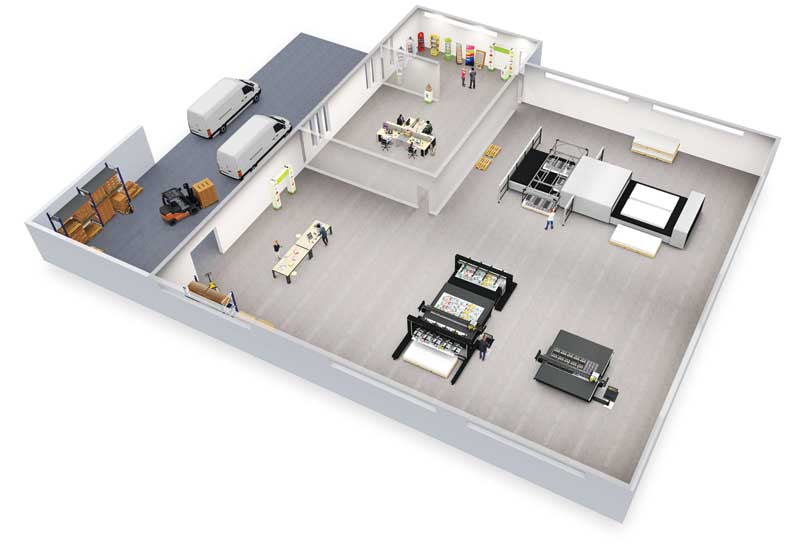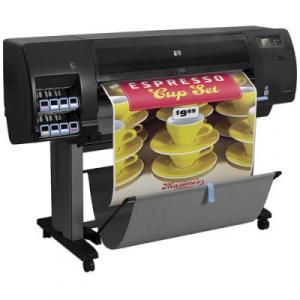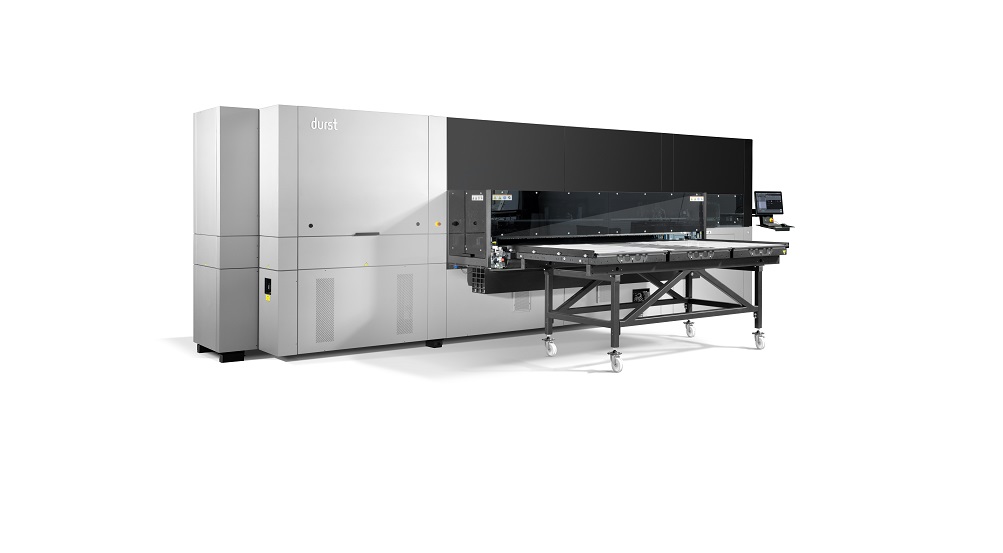Wide-format Printing: Capturing new opportunities

Image courtesy Esko
Thermoforming
With thermoforming, a plastic substrate is heated to a temperature at which it is pliable, then formed to a specific shape using a mould. Once it is cooled, any extra material is trimmed away.
Digitally printing graphics directly to thermoformable plastics is much quicker and more cost-effective than printing and laminating other formable plastics or painting shapes by hand. The process requires inks with strong adhesion properties that can withstand both heat and elongation.
PSPs can use thermoforming to create custom three-dimensional (3-D) signs, point-of-purchase (POP) displays, panels and kiosks, among other standout projects.
Architectural materials
The ability to digitally print colourful graphics on a broad array of substrates has generated interest not just among retailers and other traditional signage clients, but also architects and even consumers seeking customized decor, furnishings and building materials.
Digitally printed wallpaper has already been popular for more than a decade, but now homeowners are also buying window treatments, bedspreads, wall art, ceramic
tiles and even flooring from PSPs.
In the architecture, engineering and construction (AEC) industry, meanwhile, industrial inkjet printing is decorating wooden surfaces, wall cladding, furniture, countertops, façades, pavement and roofing.
Capitalizing on technology
Many of the wide-format printing industry’s traditional barriers to entry are coming down, thanks to advances in digital technology. Commercial PSPs are broadening their offerings with products that in the past were the domain of sign shops.
This trend is making for a crowded marketplace and fierce competition, where standing out can be a major challenge. No PSP can be all things to all customers, however. The key to successful differentiation is to be strategic in choosing which specific opportunities to pursue.
This trend toward customization often requires technology beyond the printer, ink and substrate. Tension fabric displays, for example, combine soft signage with framing systems. Many printed graphics require lamination for outdoor durability, gloss and/or clarity. Promotional display stands are augmented with dimensional elements, such as merchandising shelves and trays. Metals and woods have different finishing requirements than vinyls or textiles.
In some cases, small, specialized sign shops are better-equipped than their larger counterparts to offer such specialization. As such, they are well-positioned to meet increased market demand for niche applications, shorter runs, versioning and personalization.




